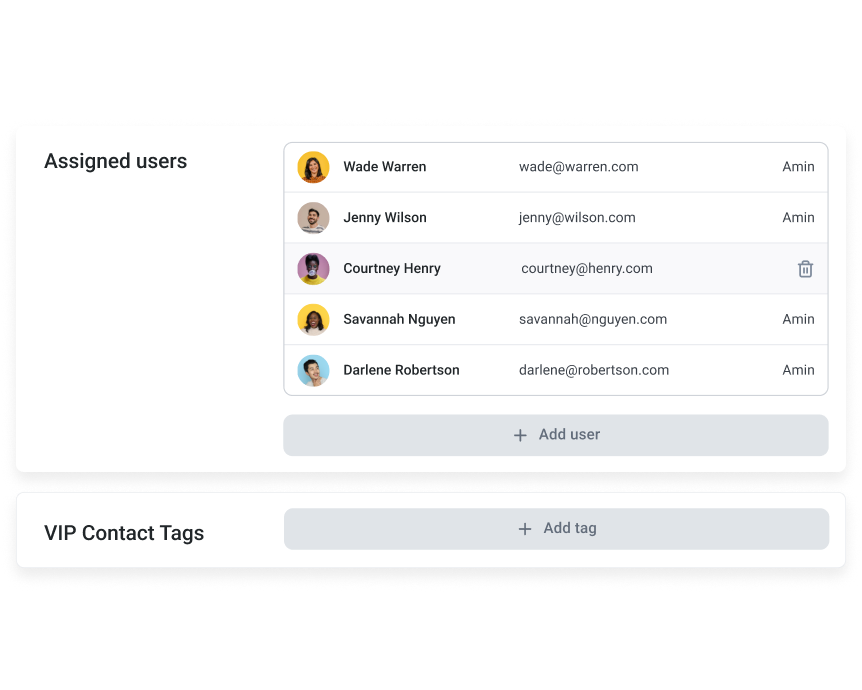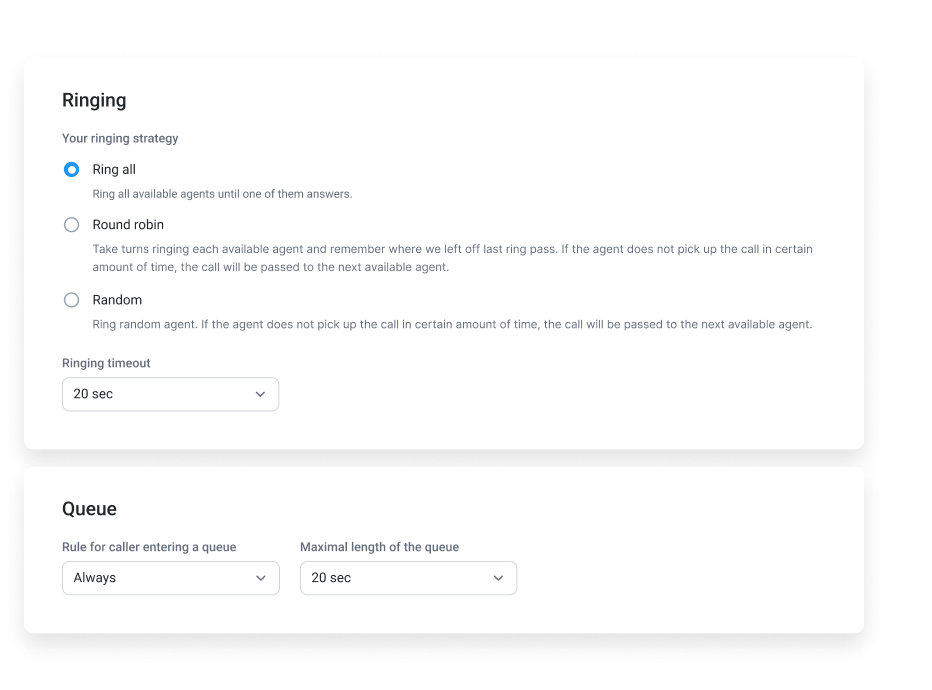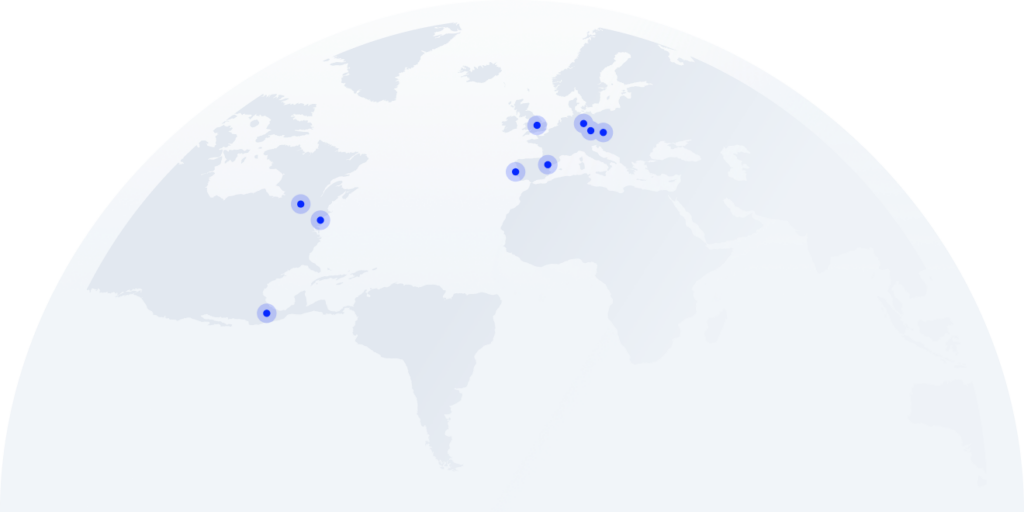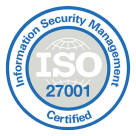Eliminate Wait Times With Smarter Call Queues
Long hold times and missed calls can cost you business. Create call queues that automatically direct customers to the right path based on predefined criteria, eliminating wait times. Your team stays organized, and every customer gets the attention they deserve.

We’ve helped thousands of global companies
Case studies featuring customers who are building faster.
What is Call Queuing?
Call Queuing helps you craft the perfect calling experience by controlling how calls are routed to your agents. Set custom criteria based on expertise, language, priority, and availability to ensure every call reaches the best-fit person.
Reduce wait times, prevent dropped calls, and keep customers satisfied with seamless call management.

How Does Call Queuing Work?
Call Queuing organizes inbound calls in a virtual queue, holding them until an agent is available. Once a line frees up, CloudTalk routes the call to the predefined endpoint.
With Skill-Based Routing, customers connect with the most qualified agent, while VIP Queues prioritize high-value callers, letting them skip the line.
You can also enhance an on-hold experience by offering personalized greetings and custom music.

Deliver Better Service with Smart Ring Strategies
Call queuing keeps inbound calls organized, but the right ring strategy determines how they reach your agents.
Whether balancing workloads or prioritizing speed, choosing the best strategy improves efficiency, reduces wait times, and enhances customer experience.
- Round Robin – Calls are distributed one by one in a set sequence.
- Ring All – All agents receive the call simultaneously.
- Random – Calls are assigned to agents at random.

Craft a Great Experience at Scale
Creating a smooth, efficient customer journey doesn’t have to be complicated. With Call Flow Designer, you can visually lay out how calls move through your phone system—from the moment they come in to the moment they’re answered or resolved.
Best of all, it scales effortlessly—whether handling a few calls or a high-volume influx, your call queuing adapts to keep every interaction efficient and frustration-free.

How to Set Up Call Queues in CloudTalk?
- In your CloudTalk account, click the left-hand side Numbers tab on the Dashboard.
- Click the blue pencil icon next to the number you want to configure.
- In the call flow, click the + icon where you want to insert the condition splitter.
- Choose an action (e.g., route to a specific agent or group) for calls that meet certain criteria.
- Click Save flow to apply your changes

Call Queue—Everything You Need to Know
How Call Queue Software Works
Virtual Queueing:
Incoming calls are placed in a virtual line rather than going to voicemail. Once an agent is free, calls are routed accordingly.
Automated Greetings & IVR:
Callers are welcomed with a pre-recorded or customized greeting. Options may include menu selection, business hours, callbacks, or simply hold. This collects caller intent and informs routing.
Automatic Call Distribution (ACD):
The system routes calls based on rules—e.g. FIFO queue order, skill-based matching, availability, or specialized routing criteria.
Routing Strategies:
Common strategies include:
– Round Robin, Ring All, Random distribution
– Skill-Based Routing ensures callers reach the most qualified agent
– Priority/VIP Queues accelerate service for high-value callers
Enhanced On-Hold Experience
Callers can hear custom messages, estimated wait times, music, or prompts to reduce frustration.
Key Benefits of Using Call Queue Software
Improved Customer Experience
No busy signals or disconnections. Greetings, updates, and smoother routing result in lower abandonment and higher satisfaction.
Faster and Smarter Routing
Automated distribution cuts idle time, speeds up handling, and connects callers to appropriate agents.
Scalability & Flexibility
Whether handling a few calls or surges, call flows adapt and scale with minimal friction.
Efficiency & Cost Savings
Streamlined operations and reduced need for extra staff lower operational costs.
Data-Driven Insights
Real-time and historical analytics (wait times, queue length, agent utilization) empower managers to optimize performance.
Better Agent Productivity & Morale
Efficient routing and balanced load help agents focus and reduce stress.
VIP Treatment
High-priority customers are fast-tracked through VIP queues for improved loyalty and service compliance.
Key Considerations When Choosing Call Queue Software
Routing Capabilities:
Look for varied options: FIFO, skill-based, round robin, priority queues, etc.
IVR & Greeting Flexibility:
Ability to craft and customize greetings, menus, messages, estimated wait times, etc.
Scalability & UX Design Tools:
Tools like visual call flow designers (e.g. CloudTalk’s Call Flow Designer) simplifies setup and scale.
Queue Experience:
Features like music, position updates, and callbacks enhance perceived wait time.
Analytics & Reporting:
Robust dashboards, real-time monitoring, and historical trends are key to operational insights.
Integration Options:
Compatibility with CRMs, helpdesk tools, automation flows increases personalization and efficiency.
VIP/High‑Value Handling:
Ensure the tool can tag and fast-track important customers via priority queue logic.
Ease of Configuration:
Drag‑and‑drop tools, intuitive interfaces, and flexible routing design simplify deployment.
How to Set up a Call Queue Software with CloudTalk
1. Start with CloudTalk Basics: Set up your account, install the app, configure numbers, add agents/groups.
2. Access the Call Flow Designer (CFD): Navigate to the “Numbers” section in your dashboard. Click the pencil icon next to the number and select “Configure call flow”.
3. Build Your Routing Logic: Use CFD to lay out flows: greeting → IVR → queue or conditional splits.Set routing rules like VIP handling, skill-based, time-based, etc.
4. Customize Queue Experience: Add pre-recorded messages or IVR prompts. Set hold music, position updates, or callback options as needed.
5. Incorporate Automations & Integrations: Use Workflow Automations to trigger tasks based on events (e.g., tagging, CRM updates). Integrate with external tools for enhanced workflow.
6. Save and Activate Your Flow: Go live.
7. Monitor & Refine: Use CloudTalk’s analytics to monitor queue performance. Adjust routing, greetings, or staffing as needed based on real-time or historical data.
Frequently asked questions
Everything you need to know about the Call Queue.
What is a call queue?
Call queuing tool routes inbound calls into one or more virtual queues. The main purpose is to avoid drop calls when all of your agents are busy. With call queuing, customers know that they’ll get assistance as soon as the line becomes available.
What does invisible queue mean in a call center?
An invisible queue means that callers are unaware of what’s happening while they’re queuing. Due to that, they don’t know how long they’ll have to wait. This can make customers unhappy and irritated. You can avoid it. Simply employ messages that announce the position in line and the estimated waiting time.
What is the average call center time in the queue?
An average wait time has a significant impact on customer satisfaction. In a traditional call center, calls should be answered within 20 seconds but in reality, it takes a bit under one minute.
What Are The Causes Of Long Calling Queues?
Possible causes of long call queues are:
– Poor agent training
– Outdated technology
– Poor management skills
– A lack of accessible information about customers
How to set the call queue to voicemail?
In CloudTalk, after a certain time, callers will be automatically transferred to voicemail, to a different call queue, or redirected to a specific phone number.



Still have questions?
Can’t find the answer you’re looking for? Please chat to our friendly team.
Ready to get started?
Join over 4,000+ modern companies that already trust CloudTalk to have MORE and BETTER calls










